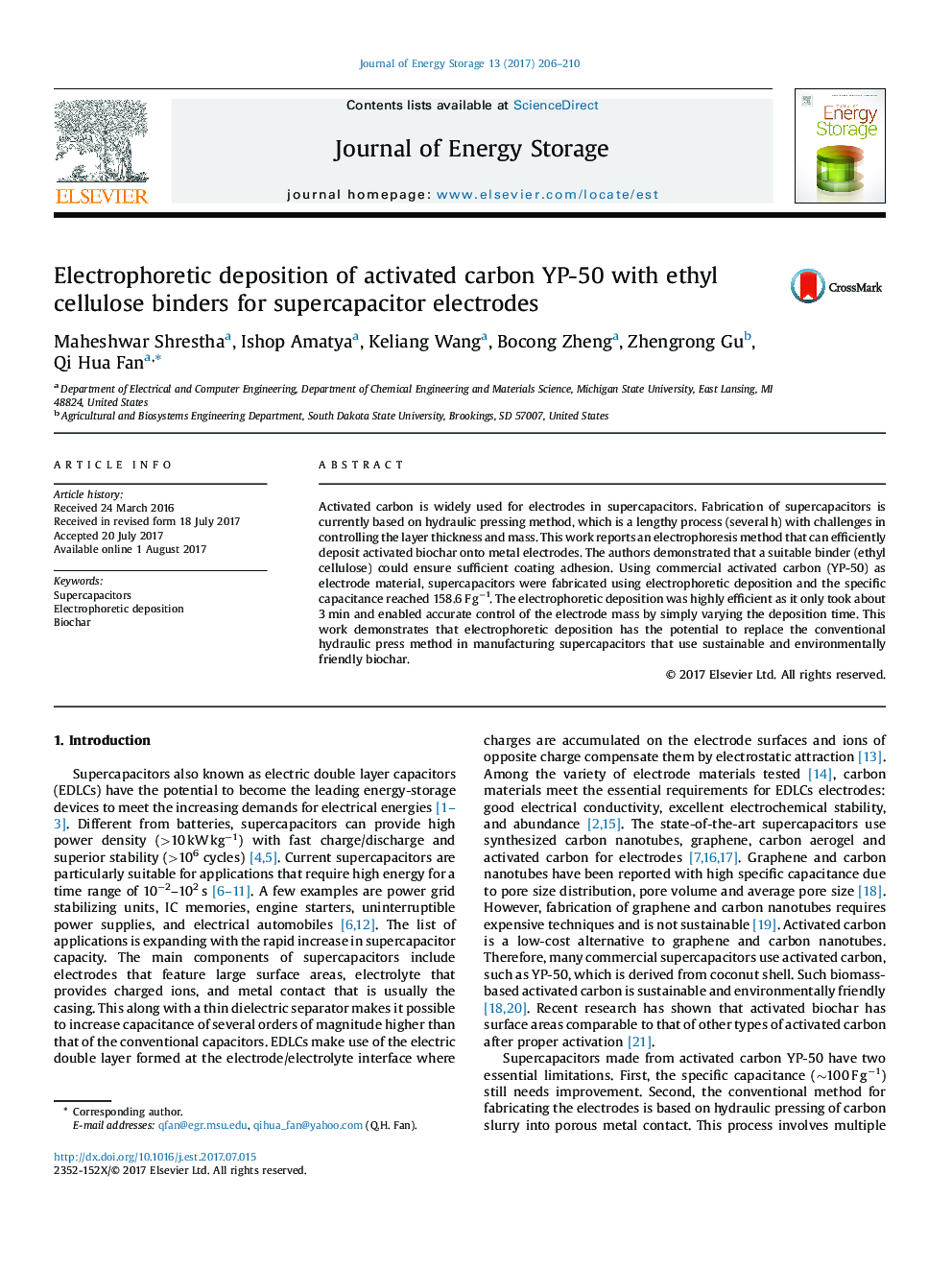| Article ID | Journal | Published Year | Pages | File Type |
|---|---|---|---|---|
| 5127333 | Journal of Energy Storage | 2017 | 5 Pages |
â¢Highly reproducible biochar carbon electrodes for supercapacitors.â¢Electrophoretic deposition of activated carbon with sufficient adhesion.â¢Replacing PTFE with ethyl cellulose as a binder.â¢Capacitance: 158.6 F gâ1 (electrophoretic deposition) vs. â¼100 F gâ1 (hydraulic pressing).
Activated carbon is widely used for electrodes in supercapacitors. Fabrication of supercapacitors is currently based on hydraulic pressing method, which is a lengthy process (several h) with challenges in controlling the layer thickness and mass. This work reports an electrophoresis method that can efficiently deposit activated biochar onto metal electrodes. The authors demonstrated that a suitable binder (ethyl cellulose) could ensure sufficient coating adhesion. Using commercial activated carbon (YP-50) as electrode material, supercapacitors were fabricated using electrophoretic deposition and the specific capacitance reached 158.6 F gâ1. The electrophoretic deposition was highly efficient as it only took about 3 min and enabled accurate control of the electrode mass by simply varying the deposition time. This work demonstrates that electrophoretic deposition has the potential to replace the conventional hydraulic press method in manufacturing supercapacitors that use sustainable and environmentally friendly biochar.
